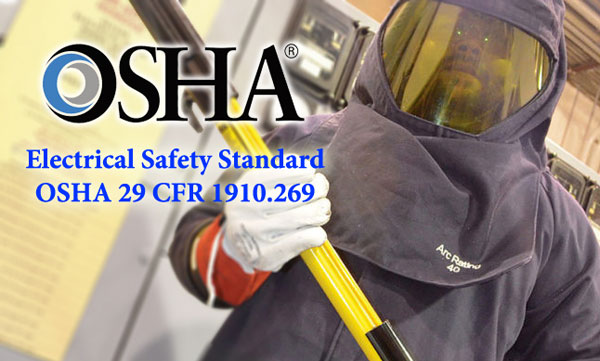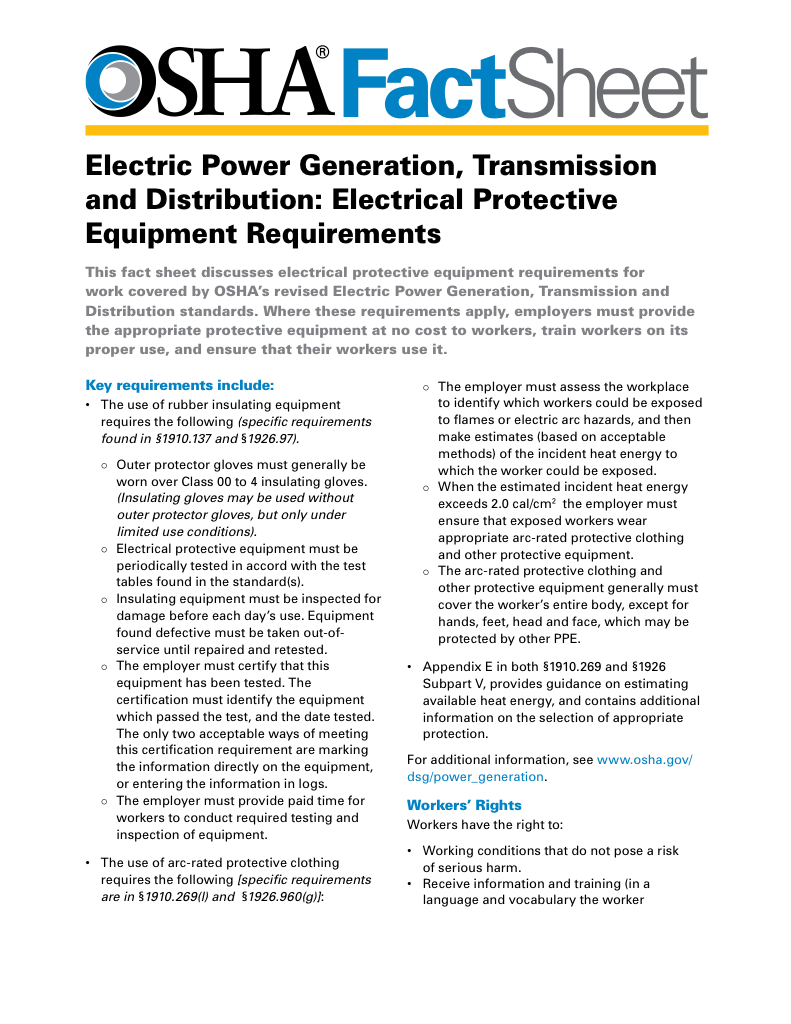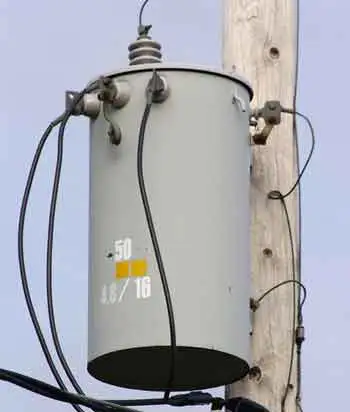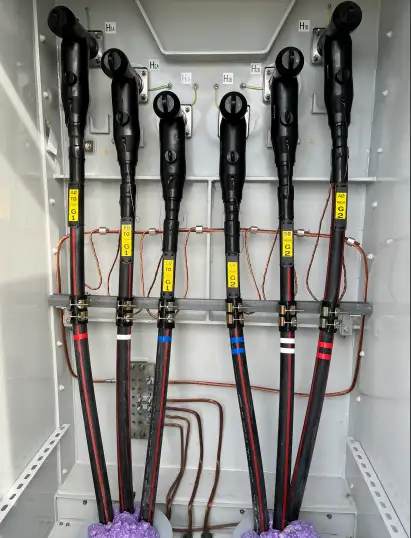OSHA's Electrical Standards Are Based On The National Electrical Code

NFPA 70e Training - Arc Flash
Our customized live online or in‑person group training can be delivered to your staff at your location.

- Live Online
- 6 hours Instructor-led
- Group Training Available
Download Our OSHA 3875 Fact Sheet – Electrical PPE for Power Industry Workers

- Follow rules for rubber gloves, arc-rated PPE, and inspection procedures
- Learn employer obligations for testing, certification, and training
- Protect workers from arc flash and electrical shock injuries
OSHA’s electrical standards are based on the NEC, NFPA 70E, and recognized industry practices. They address arc flash, shock, grounding, wiring, and lockout/tagout to ensure workplace safety, compliance, and reliable electrical operations.
OSHA's Electrical Standards Are Based On What?
OSHA's electrical standards are based on NEC, NFPA 70E, and OSHA regulations that safeguard workers from electrical hazards.
✅ Protects employees from arc flash, shock, and fire hazards
✅ Ensures compliance with NEC, NFPA, and OSHA safety codes
✅ Requires training, PPE, and safe work practices
OSHA's electrical standards are based on nationally recognized safety principles designed to prevent electric shock, arc flash, and fire hazards in the workplace. These standards draw heavily from the National Electrical Code (NEC), providing a framework for safe electrical installations and maintenance practices in both general industry and construction settings. By aligning with the NEC, OSHA ensures that its regulations reflect current best practices for minimizing electrical risks. Understanding the foundation of OSHA’s electrical standards enables employers to uphold compliance, reduce workplace incidents, and cultivate a culture of safety across all electrical operations.
Request a Free Training Quotation
What Are OSHA's Electrical Standards Based On?
OSHA's electrical standards are based on the National Electrical Code (NEC) and other widely recognized industry practices. The Occupational Safety and Health Administration (OSHA) enforces these standards to reduce the risk of injuries and fatalities caused by electric shock, electrocution, and fires in workplaces. For example, OSHA requires lockout/tagout procedures to be followed before working on energized equipment. If a worker skips this step and mistakenly re-energizes a circuit panel, it could result in a fatal arc flash incident. OSHA's regulations outline the proper use of protective equipment, procedures for safely working on or near live circuits, and the implementation of lockout/tagout systems to prevent accidental exposure to electrical hazards.
Test Your Knowledge About Arc Flash!
Think you know Arc Flash? Take our quick, interactive quiz and test your knowledge in minutes.
- Instantly see your results and score
- Identify strengths and areas for improvement
- Challenge yourself on real-world electrical topics
How Do OSHA's Electrical Standards Align with the NEC?
The NEC provides the technical framework for many of OSHA's electrical standards. While OSHA is responsible for enforcing electrical safety in the workplace, the NEC focuses on safe electrical design, installation, and inspection procedures. Together, these regulations form a comprehensive set of safety guidelines to protect employees from electrical hazards. For example, OSHA requires proper personal protective equipment (PPE) when working near energized equipment, while the NEC specifies the insulation and wiring methods that minimize the chance of that equipment becoming hazardous in the first place.
What Specific Regulations Form the Basis of OSHA's Electrical Safety Standards?
Several key regulations form the basis of OSHA's electrical safety standards, including:
-
OSHA Standard 29 CFR 1910 (General Industry): This section outlines electrical safety requirements for workplaces that are not construction sites, including guidelines for preventing electric shock, protecting against arc flash hazards, and general work practices surrounding electric equipment. For example, employees must be trained to recognize different energy sources — electrical, mechanical, hydraulic, or thermal — so they can properly isolate and control them before maintenance. Start here: OSHA Electrical Safety Training
-
OSHA Standard 29 CFR 1926 (Construction Industry): Focused on construction-related electrical hazards, this standard provides specific guidelines for safely working around power lines, ensuring proper grounding, and utilizing protective equipment. A common example is requiring minimum approach distances when setting up cranes near energized overhead lines.
-
OSHA Standard 1910.333: This standard mandates safe work practices for employees working on or near electric circuits and equipment, including lockout tagout procedures and de-energization requirements to prevent electric shock and electrocution. For example, an electrician troubleshooting a motor control center must de-energize the circuit, apply a lockout device, and test for the absence of voltage before beginning work. Without these steps, the worker risks arc flash burns or electrocution. Workers must also be trained on the proper use of lockout tagout devices to ensure they can safely manage potentially hazardous energy.
Why Are OSHA's Electrical Standards Important for Workplace Safety?
OSHA's electrical standards are critical for maintaining workplace safety by establishing clear rules to mitigate electrical hazards. Electrical injuries, such as electric shock, burns, and electrocution, are often severe and can lead to death or long-term disability. For instance, contact with a 480-volt panel can cause life-threatening injuries within seconds, making adherence to standards non-negotiable. By adhering to OSHA's standards, employers can protect their workers from these risks and prevent costly incidents that may result in legal consequences and financial losses. Ensuring that proper safety standards, such as the use of protective equipment and the maintenance of electrical equipment, are in place can significantly reduce the risk of electrical accidents.
How Do OSHA’s Electrical Standards Address Training and Certification for Electricians?
To ensure safe work practices, OSHA's electrical standards emphasize the importance of proper training and certification for employees working with electrical systems. Only "qualified persons" — those who have received specialized training — are permitted to perform tasks such as troubleshooting, repairing, or maintaining electrical systems. For example, a qualified electrician must be able to calculate approach boundaries and determine the correct arc-rated PPE before servicing a switchgear cabinet. The training must include instruction on recognizing and avoiding electrical hazards, as well as the proper use of protective equipment and safety practices. Certification may be required for specific tasks, ensuring that electricians and workers are fully equipped to handle the electrical systems they work on. Periodic re-training is also required to ensure workers remain knowledgeable and comply with the latest safety protocols. This is especially important when changes are made to the equipment or energy control procedures. See our Electricity Forum Lockout Tagout Training course page, for more details.
Electricity Today T&D Magazine Subscribe for FREE

- Timely insights from industry experts
- Practical solutions T&D engineers
- Free access to every issue
OSHA's electrical standards are crucial for establishing a safe working environment where electrical hazards are effectively controlled. By aligning their regulations with the National Electrical Code (NEC) and implementing industry-standard best practices, OSHA helps employers protect their workers from electric shock, fires, and other hazards associated with working around electricity. Through training, proper use of protective equipment, and adherence to safety standards, organizations can maintain compliance with OSHA’s electrical standards and minimize the risks associated with electrical work. See also: What Is the Relationship Between OSHA and NFPA 70E?
Related Articles:
Explore our Arc Flash Training Programs or contact us to Request a Free Training Quotation for group safety sessions and PPE consultation.








